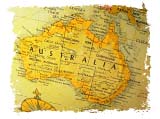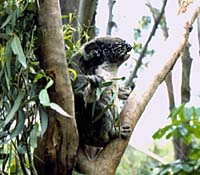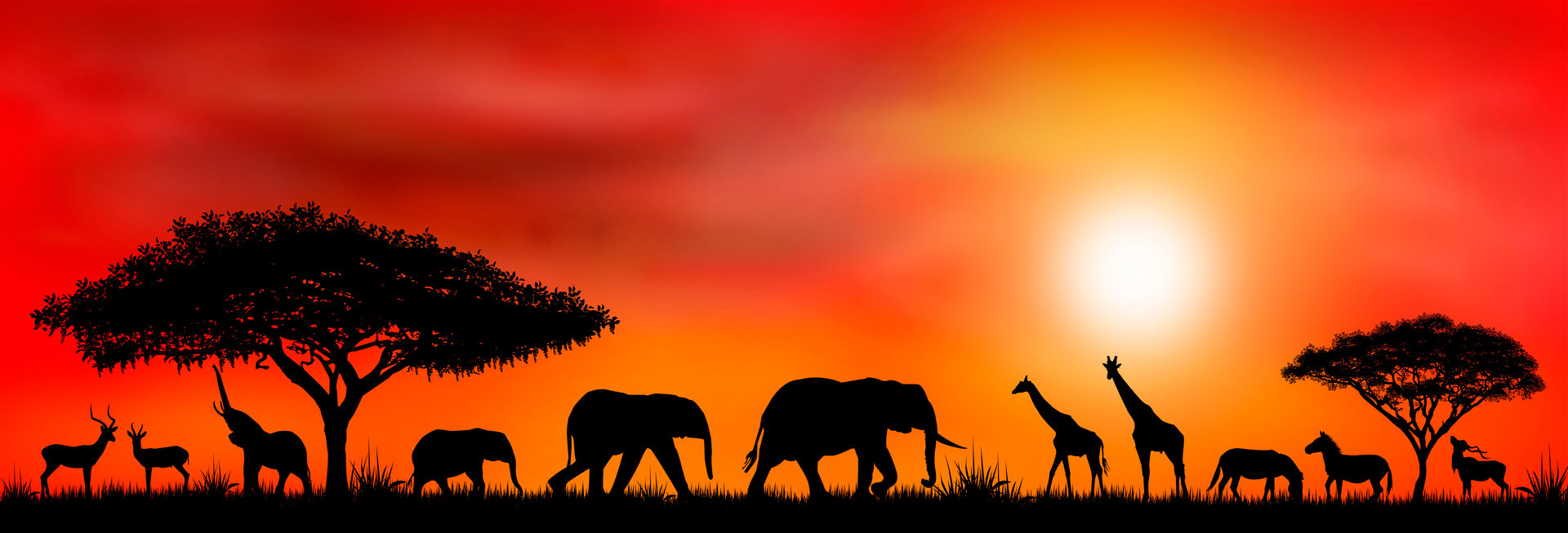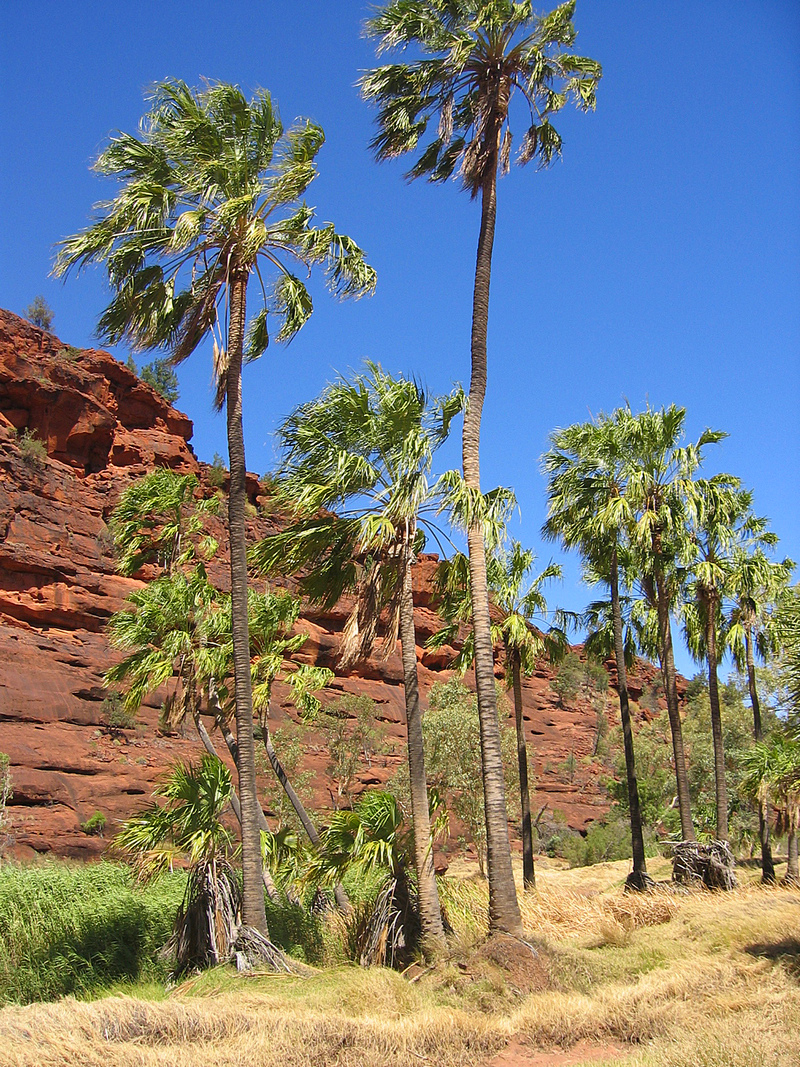How did animals get from the Ark to isolated places, such as Australia?

Let us begin by reaffirming that God’s Word does indeed reveal, in the plainest possible terms, that the whole globe was inundated with a violent, watery cataclysm—Noah’s flood. All land-dwelling, air-breathing creatures not on the Ark perished and the world was re-populated by those surviving on the Ark.
How did the animals get to the Ark?
Skeptics paint a picture of Noah going to countries remote from the Middle East to gather animals such as kangaroos and koalas from Australia, and kiwis from New Zealand. However, the Bible states that the animals came to Noah; he did not have to round them up (Genesis 6:20). God apparently caused the animals to come to Noah. The Bible does not state how this was done.
We also do not know what the geography of the world was like before the flood. If there was only one continent at that time, then questions of getting animals from remote regions to the Ark are not relevant.
Animal distribution after the Flood
There are severe practical limitations on our attempts to understand the hows and whys of something that happened once, was not recorded in detail, and cannot be repeated.
Difficulties in our ability to explain every single situation in detail result from our limited understanding. We cannot go back in a time machine to check what has happened, and our mental reconstructions of what the world was like after the flood will inevitably be deficient. Because of this, the patterns of post-flood animal migration present some problems and research challenges for the biblical creation model. However, there are clues from various sources which suggest answers to the questions.
Clues from modern times
When Krakatoa erupted in 1883, the island remnant remained lifeless for some years, but was eventually colonized by a surprising variety of creatures, including not only insects and earthworms, but birds, lizards, snakes and even a few mammals. One would not have expected some of this surprising array of creatures to have crossed the ocean, but they obviously did. Even though these were mostly smaller than some of the creatures we will discuss here, it illustrates the limits of our imaginings on such things.
Land bridges

Evolutionists acknowledge that men and animals could once freely cross the Bering Strait, which separates Asia and the Americas.[1] Before the idea of continental drift became popular, evolutionists depended entirely upon a lowering of the sea level during an ice age (which locked up water in the ice) to create land bridges, enabling dry-land passage from Europe most of the way to Australasia, for example.
The existence of some deep-water stretches along the route to Australia is still consistent with this explanation. Evolutionist geologists themselves believe there have been major tectonic upheavals, accompanied by substantial rising and falling of sea floors, in the time period which they associate with an ice age. For instance, parts of California are believed to have been raised many thousands of feet from what was the sea floor during this ice age period, which they call “Pleistocene” (one of the most recent of the supposed geological periods). creationist geologists generally regard Pleistocene sediments as post-flood, the period in which these major migrations took place.
In the same way, other dry-land areas, including parts of these land bridges, subsided to become submerged at around the same time.[2]
There is a widespread, but mistaken, belief that marsupials are found only in Australia, thus supporting the idea that they must have evolved there. However, living marsupials, opossums, are found also in North and South America, and fossil marsupials have been found on every continent. Likewise, monotremes were once thought to be unique to Australia, but the discovery in 1991 of a fossil platypus tooth in South America stunned the scientific community.[3] Therefore, since evolutionists believe all organisms came from a common ancestor, migration between Australia and other areas must be conceded as possible by all scientists, whether evolutionist or creationist.
Creationists generally believe there was only one Ice Age after, and as a consequence of, the flood. The lowered sea level at this time made it possible for animals to migrate over land bridges for centuries. Some creationists propose a form of continental break-up after the flood, in the days of Peleg. This again would mean several centuries for animals to disperse, in this instance without the necessity of land-bridges. However, continental break-up in the time of Peleg is not widely accepted in creationist circles.
Did the kangaroos hop all the way to Australia?

How did animals make the long journey from the Ararat region? Even though there have been isolated reports of individual animals making startling journeys of hundreds of miles, such abilities are not even necessary. Early settlers released a very small number of rabbits in Australia. Wild rabbits are now found at the very opposite corner (in fact, every corner) of this vast continent. Does that mean that an individual rabbit had to be capable of crossing the whole of Australia? Of course not. Creation speakers are sometimes asked mockingly, “Did the kangaroo hop all the way to Australia?” We see by the rabbit example that this is a somewhat foolish question.
Populations of animals may have had centuries to migrate, relatively slowly, over many generations. Incidentally, the opposite question (also common), as to whether the two kangaroos hopped all the way from Australia to the Ark, is also easily answered. The continents we now have, with their load of flood-deposited sedimentary rock, are not the same as whatever continent or continents there may have been in the pre-flood world.
We also lack information as to how animals were distributed before the Flood. Kangaroos (as is true for any other creature) may not have been on any isolated landmass. Genesis 1:9 suggests that there may have been only one landmass. (“Let the waters under the heavens be gathered together into one place, and let the dry land appear.”) For all we know, kangaroos might have been feeding within a stone’s throw of Noah while he was building the Ark.
It may be asked, if creatures were migrating to Australia over a long time (which journey would have included such places as indonesia, presumably) why do we not find their fossils en route in such countries?
Fossilization is a rare event, requiring, as a rule, sudden burial (as in the flood) to prevent decomposition. Lions lived in israel until relatively recently. We don’t find lion fossils in Israel, yet this doesn’t prevent us believing the many historical reports of their presence. The millions of bison that once roamed the United States of America have left virtually no fossils. So why should it be a surprise that small populations, presumably under migration pressure from competitors and/or predators, and thus living in only one area for a few generations at most, should leave no fossils?
Unique organisms
Another issue is why certain animals (and plants) are uniquely found in only one place. Why is species x found only in Madagascar and species y only in the Seychelles? Many times, questions on this are phrased to indicate that the questioner believes that this means that species y headed only in that one direction, and never migrated anywhere else. While that is possible, it is not necessarily the case at all. All that the present situation indicates is that these are now the only places where x or y still survive.
The ancestors of present-day kangaroos may have established daughter populations in different parts of the world, most of which subsequently became extinct. Perhaps those marsupials only survived in Australia because they migrated there ahead of the placental mammals (we are not suggesting anything other than “random” processes in choice of destination), and were subsequently isolated from the placentals, and so protected from competition and predation.
Palm Valley in central Australia is host to a unique species of palm, Livistona mariae, found nowhere else in the world. Does this necessarily mean that the seeds for this species floated only to this one little spot? Not at all. Current models of post-flood climate indicate that the world is much drier now than it was in the early post-flood centuries. Evolutionists themselves agree that in recent times (by evolutionary standards), the Sahara was lush and green, and central Australia had a moist, tropical climate. For all we know, the Livistona mariae palm may have been widespread over much of Australia, perhaps even in other places which are now dry, such as parts of Africa.
The palm has survived in Palm Valley because there it happens to be protected from the drying out which affected the rest of its vast central Australian surroundings. Everywhere else, it died out.
Incidentally, this concept of changing vegetation with changing climate should be kept in mind when considering post-flood animal migration—especially because of the objections (and caricatures) which may be presented. For instance, how could creatures that today need a rain forest environment trudge across thousands of miles of parched desert on the way to where they now live? The answer is that it wasn’t desert then!
The koala and other specialized types

Some problems are more difficult to solve. For instance, there are creatures that require special conditions or a very specialized diet, such as the giant panda of China or Australia’s koala. We don’t know, of course, that bamboo shoots or blue gum leaves[4] were not then flourishing all along their eventual respective migratory paths. In fact, this may have influenced the direction they took.
But, in any case, there is another possibility. A need for unique or special conditions to survive may be a result of specialization, a downhill change in some populations. That is, it may result from a loss in genetic information, from thinning out of the gene pool or by degenerative mutation. A good example is the many modern breeds of dog, selected by man (although natural conditions can do likewise), which are much less hardy in the wild than their “mongrel” ancestors. For example, the St. Bernard carries a mutational defect, an overactive thyroid, which means it needs to live in a cold environment to avoid overheating.
This suggests that the ancestors of such creatures, when they came off the Ark, were not as specialized. Thus they were more hardy than their descendants, who carry only a portion of that original gene pool of information.[5] In other words, the koala’s ancestor may have been able to survive on a much greater range of vegetation. Such an explanation has been made possible only with modern biological insights. Perhaps as knowledge increases some of the remaining difficulties will become less so.
Such changes do not require large time periods for animals under migratory pressure. The first small population that formed would tend to break up rapidly into daughter populations, going in different directions, each carrying only a portion of the gene pool of the original pair that came off the Ark.
Sometimes all of a population will eventually become extinct; sometimes all but one specialized type. Where all the sub-types survive and proliferate, we find some of the tremendous diversity seen among some groups of creatures which are apparently derived from one created kind. This explains why some very obviously related species are found far apart from each other.
The sloth, a very slow-moving creature, may seem to require much more time than Scripture allows to make the journey from Ararat to its present home. Perhaps its present condition is also explicable by a similar evolutionary process. However, to account for today’s animal distribution, evolutionists themselves have had to propose that certain primates have traveled across hundreds of miles of open ocean on huge rafts of matted vegetation torn off in storms.[6] Indeed, iguanas have recently been documented traveling hundreds of miles in this manner between islands in the Caribbean.[7]
The Bible suggests a pattern of post-flood dispersal of animals and humans that accounts for fossil distribution of apes and humans, for example. In post-flood deposits in Africa, ape fossils are found below human fossils. Evolutionists claim that this arose because humans evolved from the apes, but there is another explanation. Animals, including apes, would have begun spreading out over the Earth straight after the flood, whereas the Bible indicates that people refused to do this (Genesis 9:1, 11:1-9).
Human dispersal did not start until Babel, some hundreds of years after the flood. Such a delay would have meant that some ape fossils would be found consistently below human fossils, since people would have arrived in Africa after the apes.[8]
We may never know the exact answer to every one of such questions, but certainly one can see that the problems are far less formidable than they may at first appear.[9] Coupled with all the biblical, geological, and anthropological evidence for Noah’s flood, one is justified in regarding the Genesis account of the animals dispersing from a central point as perfectly reasonable.[10] Not only that, but the biblical model provides an excellent framework for the scientific study of these questions.
- S.A. Elias, S.K. Short, C.H. Nelson, and H.H. Birks, “Life and Times of the Bering Land Bridge,” Nature, 1996, 382:60-63. ↩
- Note that the region around the north of Australia to Southeast asia is a tectonically active part of the world. ↩
- Anonymous, “Platypus Tooth Bites Hard into Long-held Beliefs,” Creation, 1992, 14(1):13, based on an article in New Scientist, August 24, 1991. A platypus is a monotreme (an egg-laying mammal). ↩
- Actually, the koala can eat other types of gum leaves. Australia has around 500 species of eucalypt (gum) trees. Koalas eat the leaves of about 20 species, with the blue gum a favorite. Recent work has shown that the koala’s insistence on eucalypt is actually an addiction to certain chemicals in the leaf which it first eats in the mother’s milk. Bottle-raised koalas can survive on a non-eucalypt diet (see CEN Technical Journal 8(2):126). Also, the giant panda, which normally only eats bamboo shoots, has been known to eat small animals occasionally. ↩
- See ORIGIN OF ETHNIC PEOPLE GROUPS for an example of the way in which a very light-skinned “race” deriving from a mid-brown one is missing some of the information in the parent population. ↩
- Anonymous, “Hitchhiking Lemurs,” Creation, 1993, 15(4):11, commenting on J. Tattersall, “Madagascar’s Lemurs,” Scientific American, 1993, 268(1):90-97. ↩
- Anonymous, “Surfing Lizards Wipe Out Objections,” Creation, 1999, 21(2):8. ↩
- Dr. Sigrid Hartwig-Scherer, paleoanthropologist, on the video, The Image of God, Keziah Videos. ↩
- In recent literature about some of the problems of animal distribution, even within an evolutionary framework, there has been an occasional suggestion that early man may have been a much better boat-builder and navigator than previously thought. Various types of animals may thus have accompanied people on boats across the sea. This should be kept in mind as a possibility in some instances. Animals brought in this way to a new continent may have prospered, even though the accompanying people did not stay, or perished. ↩
- For further reading: • J. Whitcomb and H. Morris, The Genesis Flood, (Phillipsburg, NJ: Presbyterian and Reformed Publ. Co., 1961) • J. Woodmorappe, “Causes for the Biogeographic Distribution of Land Vertebrates After the Flood,” Proceedings of the Second ICC, Pittsburgh, PA, 1990, pp. 361-367. ↩
Edited by Don Batten, Ph.D. / Authors: Ken Ham, Jonathan Sarfati, and Carl Wieland, adapted from The Revised & Expanded Answers Book (Master Books, 2000).
Text supplied by Creation Ministries International
Text copyright © 1996, 1999, 2000, Creation Ministries International, All Rights Reserved—except as noted on attached “Usage and Copyright” page that grants ChristianAnswers.Net users generous rights for putting this page to work in their homes, personal witnessing, churches and schools. Illustrations and layout copyright, 1999, 2005, Films for Christ



